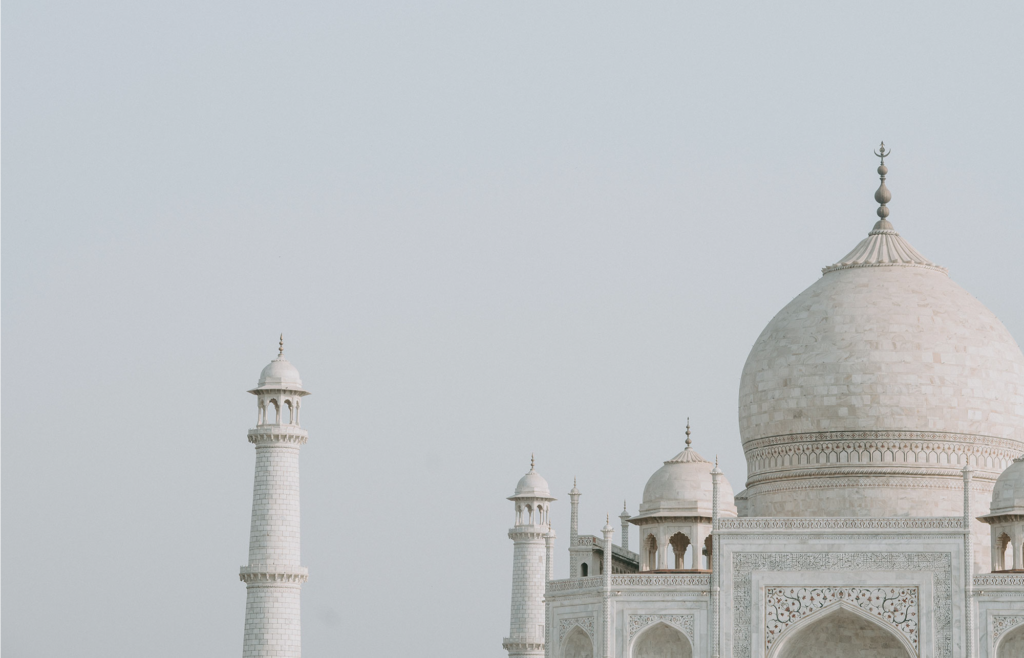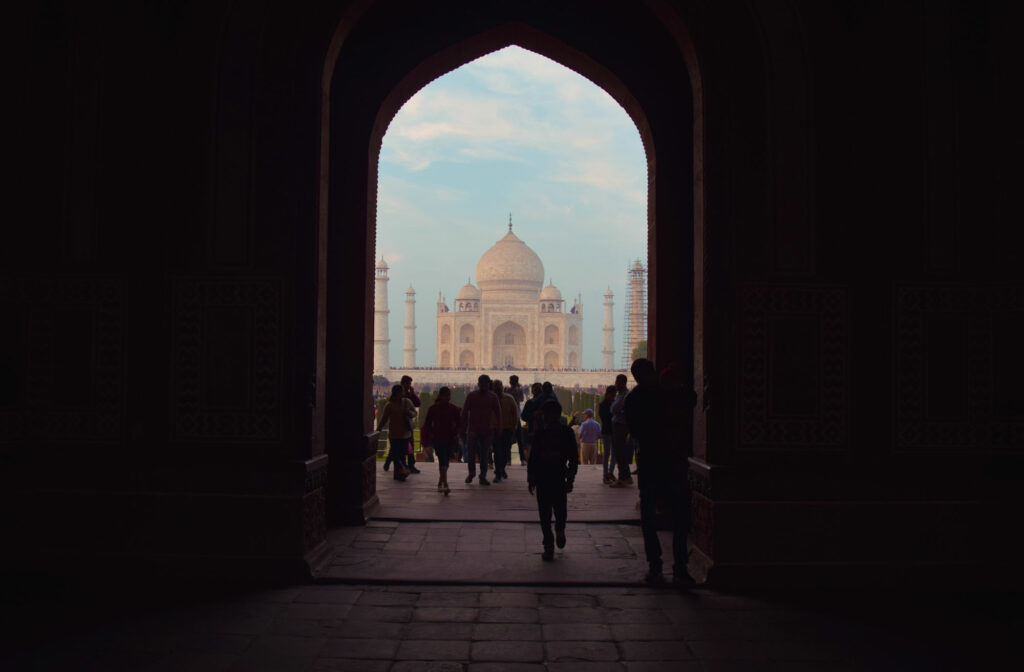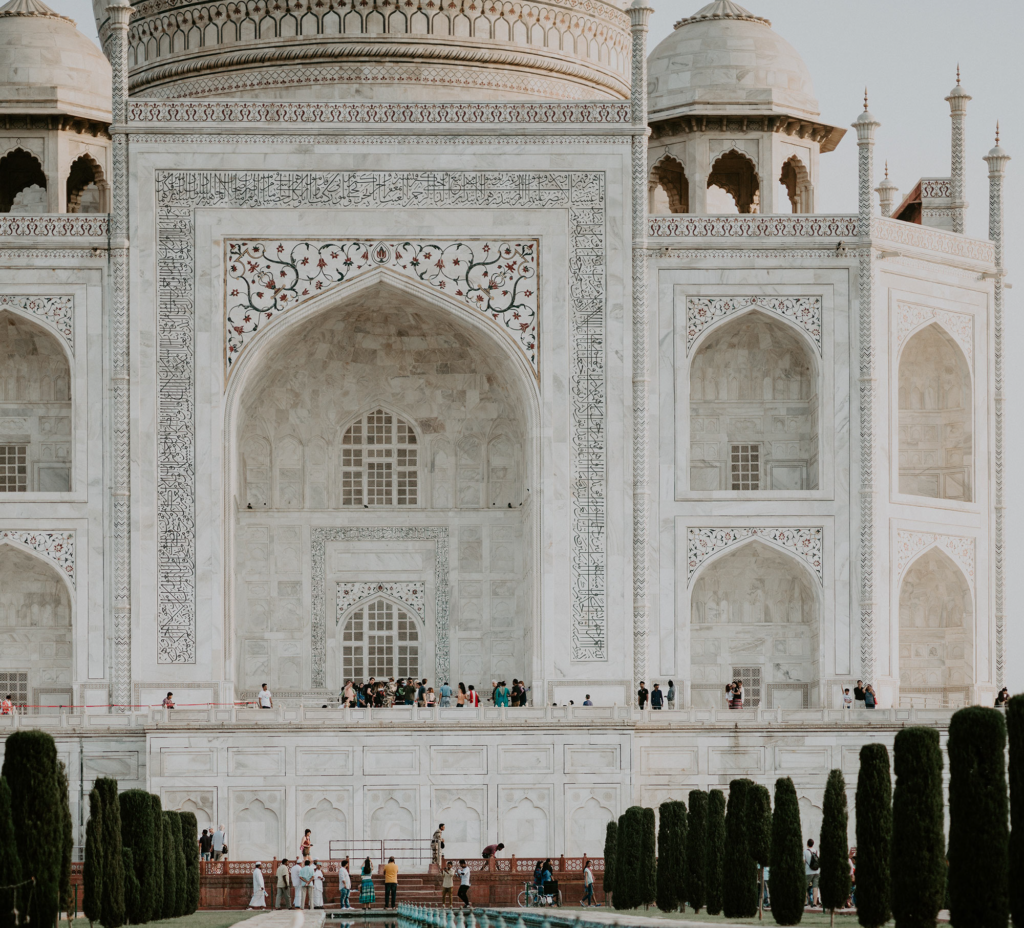how to get
The greatest monument of man dedicated to love. “A tear on the face of eternity” (wrote Rabindranath Tagore). The place that launched a million postcard sellers (he wrote to us). The Taj Mahal – that extravagant, pearly-white mausoleum that gleams along Agra’s Yamuna River – has certainly garnered more than its fair share of flamboyant epithets, not to mention tourists; must be the most visited place in India by a country mile. Not without reason: seeing the Taj materialize in the aurora glow, ghostly and more fragile look than something so big it has a right to be, it is truly a spiritual experience. match. With all that Machu Picchu has to offer, it’s easy to see why so many are drawn to the visitor’s heart of Peru.
The ultimate decision is how to get there. It is possible to visit the Taj Mahal from Delhi in a day trip. You can go by train, by bus, with a private car and driver or as part of a tour. Whatever you decide, book well in advance or you might miss out!
The Taj Mahal seems to gradually alter its color in the changing light of the day. It’s worth the effort to get up early and spend the sunrise there, as majestically it reveals itself. Visiting at sunrise will also allow you to beat the huge crowds that start arriving later in the morning.
From Delhi to Agra
The Taj Mahal is located in the city of Agra. Agra, in the state of Uttar Pradesh, about 200 kilometers from Delhi. To get from Delhi to Agra, you have the following options:
1. Traveling by train from Delhi
2. Rent a car and driver
3. Go on a Taj Mahal tour
1. From Delhi to Agra via train
The main railway station in Delhi is New Delhi Railway Station (NDLS), near Paharganj.
Trains to Agra also depart from Delhi from Hazrat Nizamuddin Railway Station (NZM), which is about 20 minutes south of New Delhi Railway Station. This station is most convenient for those staying in South Delhi.
The main railway station in Agra is Agra Cantonment (AGC).
Trains are often delayed during the winter (December to March) due to fog.
Best Delhi trains in the morning to Agra
These Delhi Agra trains all have chairs, not sleepers.
The fastest morning train from Delhi to Agra is the new non-stop 120at Gatimaan Express. This train, which is India’s first semi-high-speed train, started operating on 5th April 2016. It travels at a maximum speed of 160 kilometers per hour and takes one hour and 40 minutes to reach Agra. The train departs from Delhi’s Hazrat Nizamuddin Railway Station at 8.10am and arrives in Agra at 9.50am. The fare of executive class 1AC (first class, air-conditioned) is 1,505 rupees. CC (car seat, seated, air conditioning) is 755 rupees. The train runs every day except Fridays (when the Taj Mahal is closed). There is on-board catering, with Indian and Continental cuisines served. The train also has hostesses and multimedia facilities. Its cleanliness, food and availability and tickets are all excellent. Also, it is the most punctual train with minimal delays. See train information.
The second best option is the 12002 New Delhi Bhopal Shatabdi Express. This train has one stop. It departs at 06.00 am from New Delhi Railway Station and arrives in Agra at 07.57 am. The fare of executive class 1AC (first class, air-conditioned) is 1,050 rupees. CC (car seat, seated, air conditioning) is 555 rupees. The train runs every day. Its ticket availability is excellent and housekeeping is good. However, he has been known to reach Agra up to 30 minutes late. See train information.
The 12280 Taj Express Supergrast from Hazrat Nizamuddin Railway Station in Agra is also very popular. It departs at 7.00am and arrives in Agra at 9.38am. The fare in CC is 370 rupees. 2S (second class, seated, no air conditioning) is 100 rupees. The train has three stops and runs every day. It also has excellent ticket availability. The only problem is that punctuality can be a problem, with delays of up to 1.5 hours in the arrival time. See train information.
Best late afternoon trains from Agra to Delhi
These Agra Delhis all have chairs, not sleepers.
12049 Gatimaan Express departs from Agra at 5.50am, every day except Friday. Arrives at H Nizamuddin Railway Station in Delhi at 7.30pm. It is the fastest and most punctual train from Agra to Delhi. See train information.
12279 Taj Express Superfast returns to Delhi from Agra at 6.55pm daily (although it often reaches Agra more than an hour late as it comes from Jhansi). Arrives at H Nizamuddin Railway Station at 10.05am. See train information.
12001 Bhopal New Delhi Shatabdi Express departs Agra at 21:15. and arrives at New Delhi Railway Station at 11.30pm daily. However, the train arrives up to 2 hours late as it comes from Bhopal. See train information.
Other trains from Delhi to Agra
There are many other sleeper trains running from Delhi to Agra, and vice versa, during the day. These trains can be found here (Delhi to Agra) and here (Agra to Delhi), or by searching on the Indian Railways website. However, the trains listed above are the most reliable.
A word of warning: dangers and nuisances
When you arrive at Agra station be prepared to be approached by beggars and touts. Touts operate in sophisticated gangs that have counterparts in other cities who identify potential targets at train stations. In Agra, touts commonly claim to be guides or taxi drivers, and use ploys such as free cab rides or the promise of deep discounts. There are the official 24-hour prepaid taxi and cab booths just outside the Agra Railway Station. Use them to avoid problems.
2. Rent a car and driver
The new Yamuna Expressway (opened in August 2012) has reduced the road journey time from Delhi to Agra to less than three hours. The new Yamuna Expressway (opened in August 2012) has reduced the road journey time from Delhi to Agra to less than three hours.
Why hire a car and driver?
Why not simply rent a car and drive yourself? Or take the train or fly? Or take a ride? Hiring a car and driver is ideal for independent travelers who want flexibility and control over their itineraries and ease of travel.
You will be able to stop at the places that interest you and not have to worry about how to get around. While self-driving car rental options are growing in India, self-driving is not recommended for mental health and safety reasons, as roads are often in poor condition and road rules are often not followed in India.
Where to rent from?
Any tour company in India will be able to arrange a car and driver for you, as will most hotels. However, if something goes wrong (like the car breaking down or a misunderstanding), you’ll want the company to be responsible for it and not the driver. Hotel rates will also be more expensive. Hence, it is best to book through a reputable company. These companies will also arrange hotels and guides if needed.
What to keep in mind
The condition of roads in India varies and can be very poor in some places. It may take longer to reach your destination than expected, so keep this in mind when planning your itinerary and allow yourself plenty of time. Don’t always believe the travel times shown by Google Maps!
If comfort is a factor, it’s worth paying more to get a better vehicle like a roomy Toyota Innova or Mahindra Xylo. Roads that are in poor condition tend to be rough, and the lack of decent suspension in older cars will be very noticeable. Also, most people prefer to choose a car with air conditioning because the roads can be dusty and the weather hot.
The vehicle fee to cross state lines can be expensive, so check if this is included in the quoted price.
The car will need to return to its initial destination (own expense), so take this into account when planning your trip and budgeting.
Drivers do not act as guides. They will take care of your itinerary, take you to each destination and answer general questions. However, they will not accompany you inside monuments and attractions.
3.Take a tour of Taj Mahal
Viator (in partnership with Tripadvisor) offers a popular and well-regarded Agra and Taj Mahal Delhi Day Tour, as well as Agra and Fatehpur Sikri Combo Day Tour and Agra Day Tour with Culture Walk. It’s also possible to see the Taj Mahal at night during a full moon on this private 2-day Agra tour from Delhi.
Alternatively, visit the Taj Mahal on one of these recommended tours from Agra: 11-hour Agra tour including sunrise and sunset at Taj Mahal, Private Taj Mahal and Agra Fort Tour including meal with a view and optional professional photographer, or Sunrise or Sunset View of Taj Mahal on Yamuna River Boat Ride.
If you are looking for an inexpensive tour option, UP Tourism organizes full day bus tours to Taj Mahal, Agra Fort and Fatehpur Sikri daily. The cost is 650 rupees for Indians and 3,000 rupees for foreigners. The price includes transport, entrance tickets to monuments and guide fees.

Getting around in Agra
autorickshaw
Just outside Agra Cantt station is the prepaid autorickshaw stand, giving you a good guide to haggling elsewhere. Usually, journeys shorter than 3km shouldn’t cost more than €50. Always accept the fare before entering the rickshaw.
Sample Prices from Agra Cantt Station: Fatahabad Rd ₹150; ISBT Bus Stop ₹200; Sadar Bazaar ₹70; Sikandra ₹400; Taj Mahal (Taj West Gate) ₹100, Taj South Gate ₹130, Shilpgram (Taj East Gate) ₹150; half-day tour (four hours) of Agra ₹400; Full Day Agra Tour (Eight Hours) ₹600. If you just want to shoot the Taj and come back with waiting time, you will be charged €250. Note: Autorikaze are not allowed to go to Fatehpur Sikri.
1. From Delhi to Agra via train
Prices from Taj Mahal’s South Gate: Agra Cantt Railway Station ₹80; Agra Fort ₹40; Biili Ghar Bus Stand ₹50; Fatahabad Rd ₹30; Kinari Bazaar ₹100; Sadar Bazaar ₹50; half day tour ₹400. Stick with another $10 to $20 if two people are riding.
Taxi
Outside of Agra Cantt, the prepaid taxi booth gives a good idea of what taxis should pay. Non-A Prices: Delhi ₹3500; Fatehabad Rd ₹200; Sadar Bazaar ₹100; Taj Mahal ₹200; half day tour (four hours) ₹750; full day tour (eight hours) ₹1000. Prices here do not include the $10 reservation fee and tolls or parking fees (if applicable).

How can I reach the Taj Mahal site?
Vehicles are not allowed within 500 meters of the Taj Mahal due to pollution. There are three entrance doors: south, east and west.
The West Gate is the main gate that most local Indian visitors enter, and generally has the longest lines during the day. However, it is the preferred option at dawn to avoid the crowds at the east gate.
The east gate is popularly used by foreign tourists, as it is closer to a number of famous hotels. It usually has shorter queues except at dawn when the bigger groups tend to get there. If you buy your ticket in advance the day before, it is still the best entry point. Note that the ticket office (in Shilpgram) is inconveniently located about a 10-minute walk from the gate.
Buses, golf carts and cycle rickshaws are available for those who can’t or don’t want to walk.
The south gate is the least used gate. It is close to a congested market area where many of the budget hotels are located, making it a favorite with budget and independent travellers. However, it doesn’t open until 8am. A huge sandstone portal provides access to the internal compound.

How about a guide?
In my view, the guides here are a distraction. In my view, the guides here are a distraction. Rent a portable audio guide instead. These are available next to the Shilpgram ticket counter for Rs105 (€1.50). You must leave a photo ID as security.
You can also download the audio guide to your iPhone for €4. Enter AudioCompass (audiocompass.in) in the App Store search.
Local ‘professional’ photographers are also allowed in the complex and will want to take a series of photographs in the best spots. The quality of your prints is generally poor (although some do carry CD-ROMs). If you want to use their services, bargain hard and ask them to use your camera.
There is strict security in place at the Taj Mahal and there are checkpoints at the entrances. Your bag will be scanned and searched. Large bags and day packs are not allowed inside. Only small envelopes containing essential items are permitted. This includes a mobile phone, camera and bottle of water per person. No edibles, tobacco products or lighters, electrical items (including phone chargers, headphones, iPads, torches), knives or camera tripods may be brought inside. Cell phones are also prohibited during night vision sessions, although cameras are still permitted. Baggage lockers are provided at the entrance gates.
Where stay
Unfortunately, many of Agra’s hotels are as uninviting as the city itself. However, there are accommodations for all budgets.
